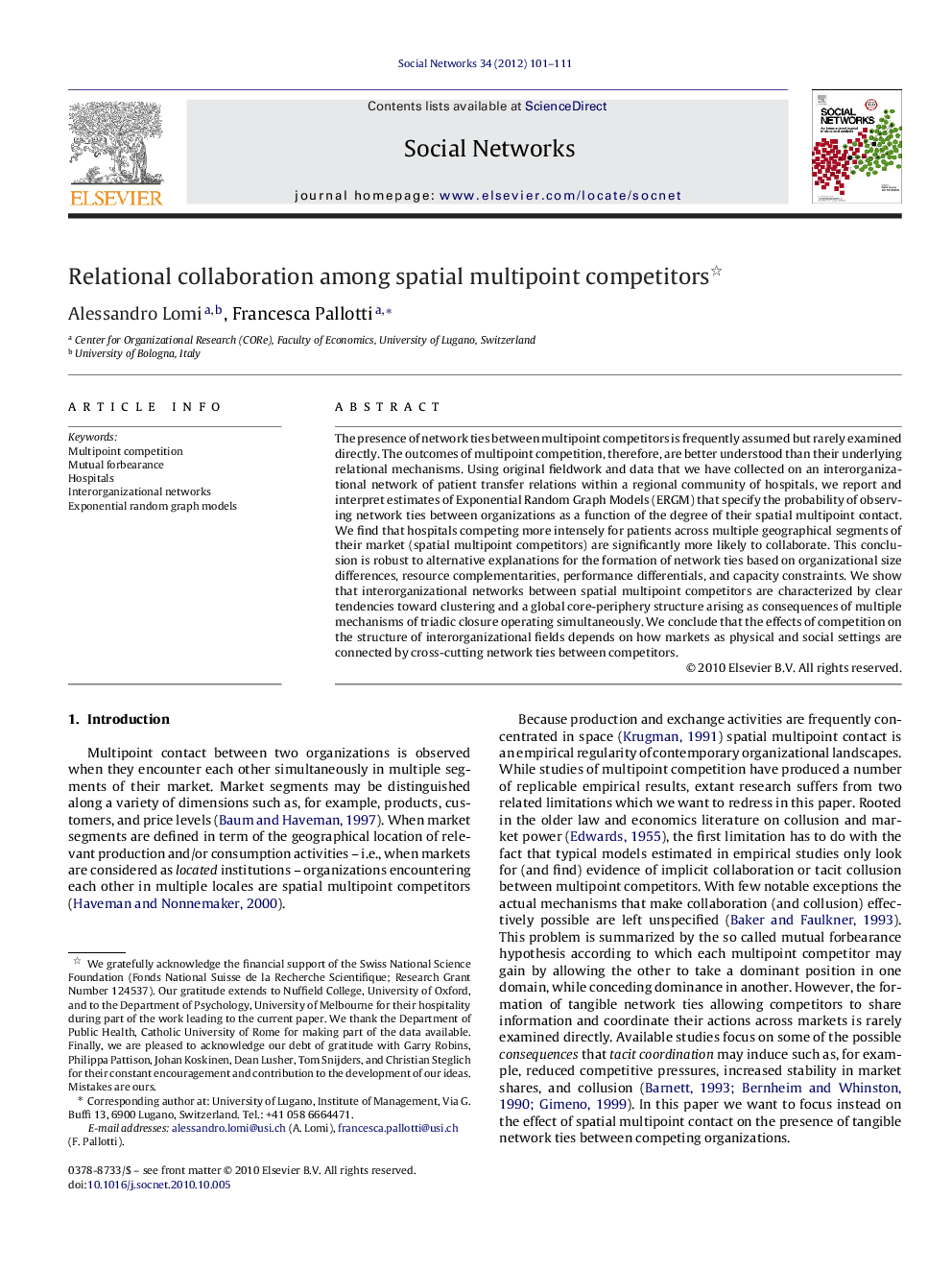| Article ID | Journal | Published Year | Pages | File Type |
|---|---|---|---|---|
| 1129293 | Social Networks | 2012 | 11 Pages |
The presence of network ties between multipoint competitors is frequently assumed but rarely examined directly. The outcomes of multipoint competition, therefore, are better understood than their underlying relational mechanisms. Using original fieldwork and data that we have collected on an interorganizational network of patient transfer relations within a regional community of hospitals, we report and interpret estimates of Exponential Random Graph Models (ERGM) that specify the probability of observing network ties between organizations as a function of the degree of their spatial multipoint contact. We find that hospitals competing more intensely for patients across multiple geographical segments of their market (spatial multipoint competitors) are significantly more likely to collaborate. This conclusion is robust to alternative explanations for the formation of network ties based on organizational size differences, resource complementarities, performance differentials, and capacity constraints. We show that interorganizational networks between spatial multipoint competitors are characterized by clear tendencies toward clustering and a global core-periphery structure arising as consequences of multiple mechanisms of triadic closure operating simultaneously. We conclude that the effects of competition on the structure of interorganizational fields depends on how markets as physical and social settings are connected by cross-cutting network ties between competitors.
